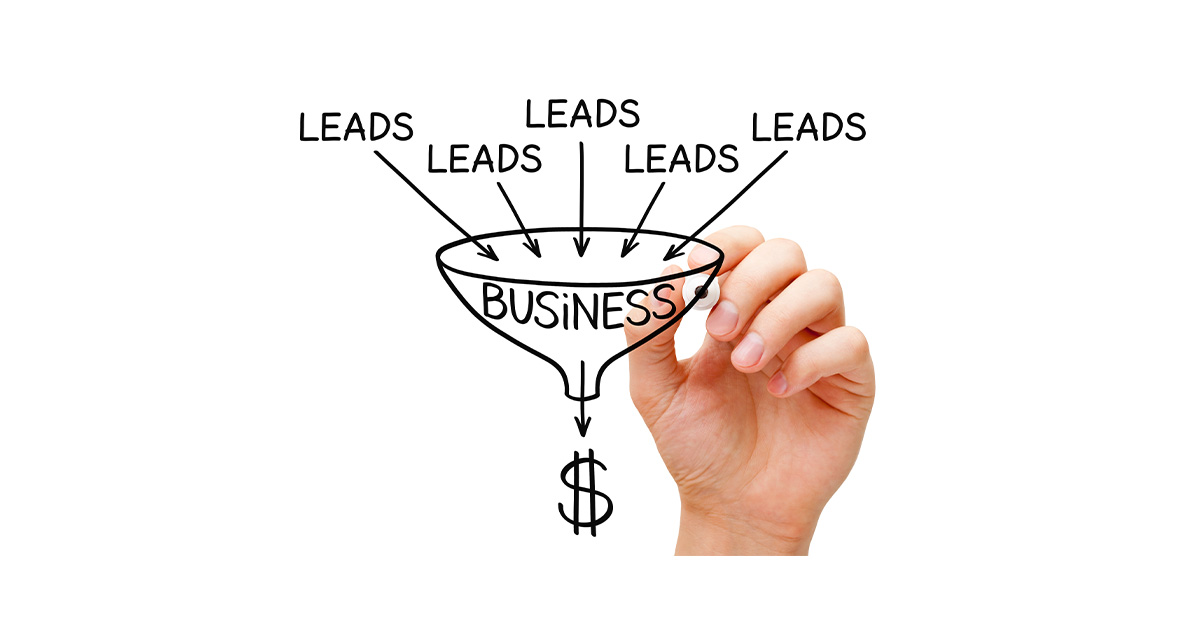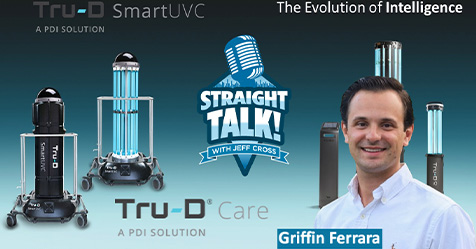Most business leaders’ essential goals are increasing sales and keeping sales pipelines full. In the online world, increasing abundant online visibility and attracting new website visitors is an effective, proven strategy for generating new business-to-business (B2B) leads and sales.
This article will outline strategies and tools for targeting and generating new leads using online sources. These strategies employ sophisticated combinations of useful, engaging content, informative websites, consistent email marketing, interesting social media, and effective digital advertising.
What is online lead generation?
Online lead generation (OLG) refers to the process of attracting and capturing potential customers or leads with engaging content and exclusive offers via online channels. It involves using digital marketing strategies and tactics to identify and engage with individuals who show an interest in a particular product, service, topic, issue, or brand.
Online lead generation is essential for several reasons:
- Business growth: Generating a steady stream of leads is essential for the development and success of any business. Without a consistent influx of new leads, a company may struggle to expand its customer base and increase sales.
- Targeted audience: OLG allows businesses to target specific demographics, interests, or behaviors. By focusing on the right audience, companies can improve their chances of attracting qualified leads who are more likely to convert into customers.
- Cost-effective: OLG offers a more cost-effective approach than traditional marketing methods. Digital marketing, such as social media, search engine optimization (SEO), content marketing, and email marketing, can provide a higher return on investment (ROI) by reaching a larger audience at a lower cost.
- Measurable results: OLG enables businesses to track and measure their marketing efforts more effectively. With the help of analytics tools, companies can monitor the performance of their campaigns, evaluate conversion rates, and make data-driven decisions to optimize lead-generation strategies.
- Relationship building: OLG allows businesses to engage with potential customers early in their buyer’s journey. By providing valuable content, personalized experiences, and effective communication, companies can build trust, nurture relationships, and increase the likelihood of converting leads into loyal customers.
- Competitive advantage: Many businesses actively utilize OLG strategies in today’s digital landscape. By adopting effective lead generation techniques, companies can gain a competitive edge by reaching targeted potential customers before their competitors do.
Overall, online lead generation is essential because it helps businesses generate a consistent flow of potential customers, improve targeting and cost-effectiveness, measure and optimize marketing efforts, build relationships, and gain a competitive advantage in the digital marketplace.
OLG uses inbound marketing
Online lead generation is an element of what is referred to as “inbound marketing.” Inbound marketing is applicable to commercial and industrial cleaning sales due to several crucial factors of interest to property managers/owners, including:
- Health and safety, including such issues as Covid-19 viruses.
- Improved indoor air quality (IAQ)
- Enhanced productivity
- Preservation of property
- Compliance with health standards, requirements, and regulations, including OSHA.
Due to these critical and evolving elements, property managers/owners frequently may face new and different challenges and thus search for new and various solutions.
Where do people turn to get information about complex topics such as health and safety issues, indoor air quality, and new standards/regulations? The process of researching and seeking useful information often starts online at Google.
This tells us that we should be online. But how does this benefit our business? Here is where we begin with a marketing strategy called inbound marketing.
But what is inbound marketing?
Gabriella Hunt explained it well in her recent article on Constant Contact entitled “From Strangers to Buyers: The Power of Inbound Marketing.” She wrote: “Inbound marketing aims to attract customers by providing valuable and relevant content or experiences. It’s a form of demand generation designed to draw prospects in, unlike traditional (or outbound marketing), which outwardly pushes a brand, product, or service.”
This article focuses on understanding online lead generation using essential inbound marketing principles.
Know your customers
First, the business that knows its customers best will win more business over the longer term. With a keen understanding of clients’ exposures and needs, commercial and industrial cleaning professionals can educate and steer clients to the most appropriate strategies, practices, and products.
While the environment in which our customers operate is constantly evolving, a significant need for cleaning assistance and guidance exists. This produces an ideal environment for inbound marketing and online lead generation.
Target a specific audience with relevant, useful content
Before we explain some specific elements of OLG, let’s quickly revisit the trusty sales funnel. The well-known sales funnel helps us envision the process our customers travel when going through the buying process. It includes the four steps of awareness, interest, decision, and action/sale. See image below:

For this article, we’ll focus on brand new customers, those at the very beginning of the buying process (or top of the funnel), the “Awareness” stage. We often refer to this group as “People we don’t know.”
An essential element of the “Awareness” stage is that customers are not yet looking for a specific brand, company, or even product. They have a question, issue, or problem and go online to see what they can find. This is precisely when we want to “get found.”
For instance, let’s focus on a scenario in which we are seeking local property managers and owners as potential customers.
Using this example, numerous strategies and different tools can successfully generate this type of lead for us.
First, let’s briefly review some actual search data from Google, which shows search data from the last 12 months. See the image below:

The above table shows that from Oct. 1, 2023, to Sept. 30, 2024, there were:
- 50,000 searches per month for “commercial cleaning.”
- 50,000 searches per month for “commercial cleaning services.”
- 50,000 searches per month for “office cleaning services.”
- 50,000 searches per month for “commercial cleaning services near me.”
- 50,000 searches per month for “commercial cleaners near me.”
If you look at the year over year (YoY) change column, you will see no change from last year to this year. However, a 900% increase occurred in monthly search volume for the previous two. This is a significant finding, and we can exploit this growth in search volume before our competition discovers this change in search habits.
The competition level for these words is Low, which is appealing from a marketing perspective. This means we should be able to rank well in search engine results pages (SERPs) for these specific keywords in a brief period.
Attracting leads
Now that we have a target (local commercial property managers and property owners), we can create content and messaging to draw interest and attention.
Here are three common ways to attract new customers online (In marketing speak, “people we don’t know.”):
- Search engines, e.g., Google
- Digital advertising
- Social media content
If our content and messaging are on target, we can illuminate a need/issue related to the office environment to the point where a property manager/owner decides they must do something about it. What step do we want this manager/owner to take next? Perhaps click the link on search engine results, advertisements, or social posts?
Where does the link go?
Does the link take the reader to a blog post, article, landing page, or website? Wherever the link takes the visitor, there should be a logical, well-defined path leading the visitor through a process of learning about the issue (potential liability) and offering clear next steps for some type of “special offer.”
In this situation, an “offer” can be anything of value to the customer. It’s not necessarily a “deal.” Access to a video, article, checklist, or other resource is available. This “offer” must be valuable enough that the customer will trade their contact information for access.
The use of video at this stage is beneficial. Abundant research shows the benefits of using video during this “conversion” process. Plus, there should be a contact form to collect contact information and request (or better yet schedule online) a call or ask questions. This is part of what should be an ongoing, continuous process of building your company’s email list.
This “special offer” process should be designed to take the visitor through an online process to collect contact information, schedule a call, and connect to someone to facilitate a solution (perhaps a review of existing cleaning contracts or a visit to the premises to review needs).
Generating and capturing leads
Once you have attracted the attention of a potential customer, how do you take things to the next step? Here is where we need the customer to take the first step. This means we need to make the path to conversion as straightforward as possible and capture contact information wherever possible. This is where email marketing, especially automated email series, comes into play and works beautifully.
Did you know that 77% of the ROI of email marketing comes from targeted, automated emails?
Tracking and measuring performance
By using the performance data available, we can accurately track and measure the performance of any online campaign. Using powerful tools such as Google Analytics, Google Search Console, and data from emails, ads, social media, and videos, we can see exactly how our campaign assets are working and what our audience is responding to.
We can also use this data to see where we can make improvements to content and creative assets, adjust to our target audience, and identify which avenues are most effective at reaching the best potential customers.
Improving campaign performance
We have created a proprietary model to illustrate the process we use to create, manage, and improve campaigns over time for our clients. Here are the skeletal steps of that process:
- Website: The website is the central hub of communications and information.
- Optimization: Website optimization encompasses having the right and best information readily available and getting found by the right people at the right time.
- Communications: Customers have alternatives, and competition is present. This environment demands excellent, helpful communication in different forms and channels. This includes websites, social media, email, and video, along with many forms of digital advertising.
- Promotional Campaigns: You may offer the best product, but if your customers don’t try it or know about it, success may be elusive. Promotional campaigns capture new customers and engage (and educate) existing customers (for renewal and cross-selling opportunities).
- Analysis: Digital marketing leverages user data, detailed measurement, and analysis. With detailed metrics and powerful tools, we can learn much about what works and is not with our website visitors.
After the analysis work in step No. 5, we return to step No. 1 (website) and begin this process again to improve the website, optimization, communications, and promotional campaigns. Critically, this is a repetitive, ongoing process that will lead to better results and more accurate customer targeting over time.
Keep customers’ needs in focus
Due to the complexity of health, operating, and regulatory risks facing property managers/owners, our customers will continue to seek information and knowledge to help make the best possible property management decisions. These are significant decisions, and smart customers seek advice and guidance. The internet is a valuable source of information. If cleaning (and other property maintenance) professionals keep their customers’ needs clearly in focus, they will find eager buyers for their products and services.



